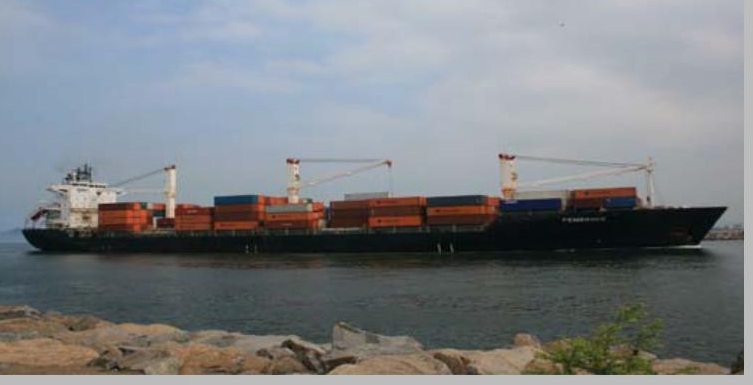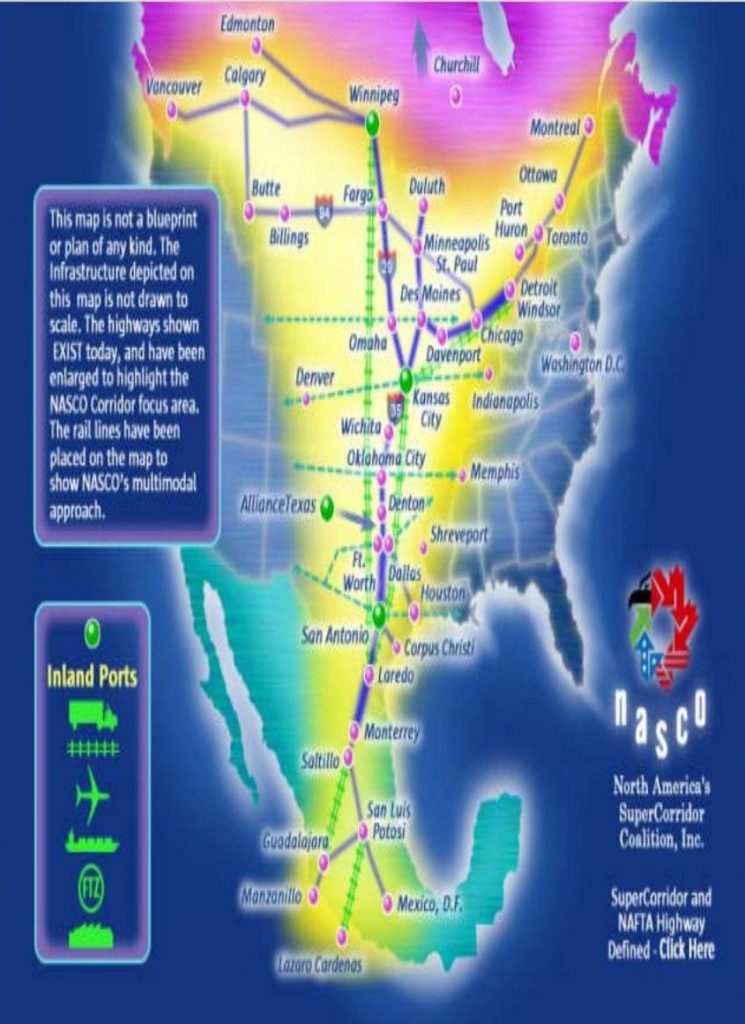By Terry Sovil from the August 2010 Edition
Last issue we learned about port operations and how an individual port terminal is setup. This month we’ll look more at infrastructure and Mexico’s Ports. Next issue we’ll wrap up with information on our port, current projects and futures.
Mexico has few “natural harbors” along its 11,000 kilometers of coastline. The two large bays of Manzanillo fall between Banderas Bay in Puerto Vallarta and the Isthmus of Tehuantepec. All of these were formed when parts of the Sierra Madre del Sur mountain range fell into the sea. A natural bay easily becomes a natural harbor or port.
Mexico has 75 maritime ports and 9 river ports. Living in Manzanillo we always want to think of our port as “The Port”. That usually translates to the “largest Port”. There are a variety of factors used to measure a port. How large physically (hectares or acres)? How much traffic? What volume of cargo? The fact of the matter is, on the world market, most all of the “top 5” are in Asia. Even ports like Los Angeles / Long Beach, CA, are not in the top ten.
Top 5 by Cargo Volume: Top 5 by Container Traffic
1. Shanghai, China 1. Singapore, Singapore
2. Singapore, Singapore2. Hong Kong, China
3. Rotterdam, Netherlands 3. Shanghai, China
4. Ningbo, China 4. Shenzhen, China
5. Guangzhou, China 5. Busan, South Korea
Manzanillo is a favored port due to its strategic location. It was the third port created by the Spaniards in the Pacific. Ships were built here using the local “manzanilla” trees. The countries that share the Pacific Basin with Manzanillo/Mexico are the United States, Canada, Guatemala, Colombia, Ecuador, Chile, China, Japan, North Korea, South Korea, Taiwan, the Philippines, Thailand, Vietnam, Malaysia, Indonesia, Singapore, Hong Kong and Australia. Manzanillo’s catchment area (the area from which we attract customers) includes 17 states of Mexico: Aguascalientes, Coahuila, Colima, Distrito Federal, Durango, Estado de Mexico. Guanajuato, Hidalgo, Jalisco, San Luis Potosi, Michoacan, Morelos, Nayarit, Nuevo Leon, Queretaro, Tamaulipas and Zacatecas. Together these areas represent 42% of the population and generate 60% of the GDP.
Manzanillo has links to more than 74 destinations and is served by 32 different shipping lines. The five largest ports–Tampico, Veracruz, Guaymas, Mazatlán, and Manzanillo–handled 80 percent of Mexico’s ocean freight.

I was able to spend time with Lic. Francisco Llamas González of API to learn about the port. API is the Administración Portuaria Integral de Manzanillo or Port Administration of Manzanillo. It is a federal government entity that was created in December 1993 and started operations in February 1994. API was given a 50 year concession to carry out administration, promotion, building, developing and maintaining infrastructure for the Port of Manzanillo. This was done to increase the quality of service in the shipping sector and enhance Mexico’s exports. Other nearby ports included in concession management include Acapulco and Lázaro Cárdenas.
Having a great physical location isn’t of much use without good infrastructure. The port has access to our main highway, 200, and most trucks and trains are able to depart the port quickly and easily. Fully 80% of the port traffic is via truck with the rest via rail. Manzanillo has double stack train services on fixed routes with the principal cities of Mexico.

Look at the map of the NASCO SuperCorridor for a perspective on shipping from Manzanillo to the USA and Canada via truck and rail. Having never seen the routes laid out like this I was a bit surprised. The NASCO SuperCorridor cuts right through the central USA with highways to Vancouver, Calgary, Edmonton, Winnipeg, Montreal and Toronto and even Duluth Minnesota make the map.
TEUs, discussed in the last article, for Manzanillo have increased from
63,800 in 1994 to 1,409,780 in 2008! This puts Manzanillo at #1 for “containerized cargo” in Mexico but 7th among major port terminals of Latin America. Manzanillo is fourth for agribulks, fifth for cars, fifth for mineral bulks and seventh for general cargo. Manzanillo is not well-equipped for handling liquid products (petroleum). The Port of Manzanillo is also a Type 1 port, based on volume and expertise in handling sensitive cargoes. This is one of Mexico’s most important Customs operations. Other ports such as Veracruz handles general cargo, especially cargo headed for Mexico City. The Port of Tampico handles petroleum.

Download the full edition or view it online
—
Terry is a founding partner and scuba instructor for Aquatic Sports and Adventures (Deportes y Aventuras Acuáticas) in Manzanillo. A PADI (Professional Association of Dive Instructors) Master Instructor in his 36th year as a PADI Professional. He also holds 15 Specialty Instructor Course ratings. Terry held a US Coast Guard 50-Ton Masters (Captain’s) License. In his past corporate life, he worked in computers from 1973 to 2005 from a computer operator to a project manager for companies including GE Capital Fleet Services and Target. From 2005 to 2008, he developed and oversaw delivery of training to Target’s Loss Prevention (Asset Protection) employees on the West Coast, USA. He led a network of 80+ instructors, evaluated training, performed needs assessments and gathered feedback on the delivery of training, conducted training in Crisis Leadership and Non-Violent Crisis Intervention to Target executives. Independently, he has taught hundreds of hours of skills-based training in American Red Cross CPR, First Aid, SCUBA and sailing and managed a staff of Project Managers at LogicBay in the production of multi-media training and web sites in a fast-paced environment of artists, instructional designers, writers and developers, creating a variety of interactive training and support products for Fortune 1000 companies.



You must be logged in to post a comment.